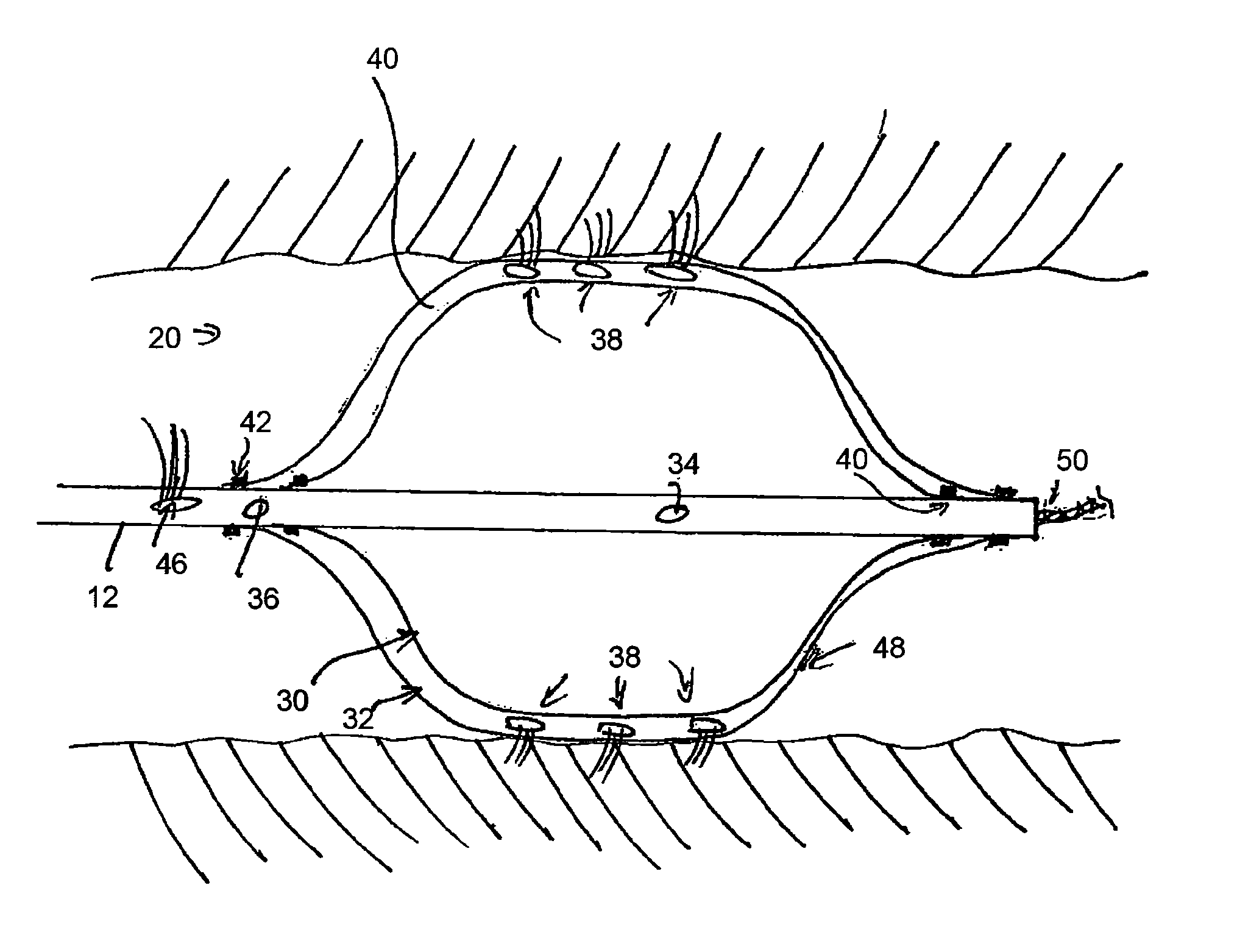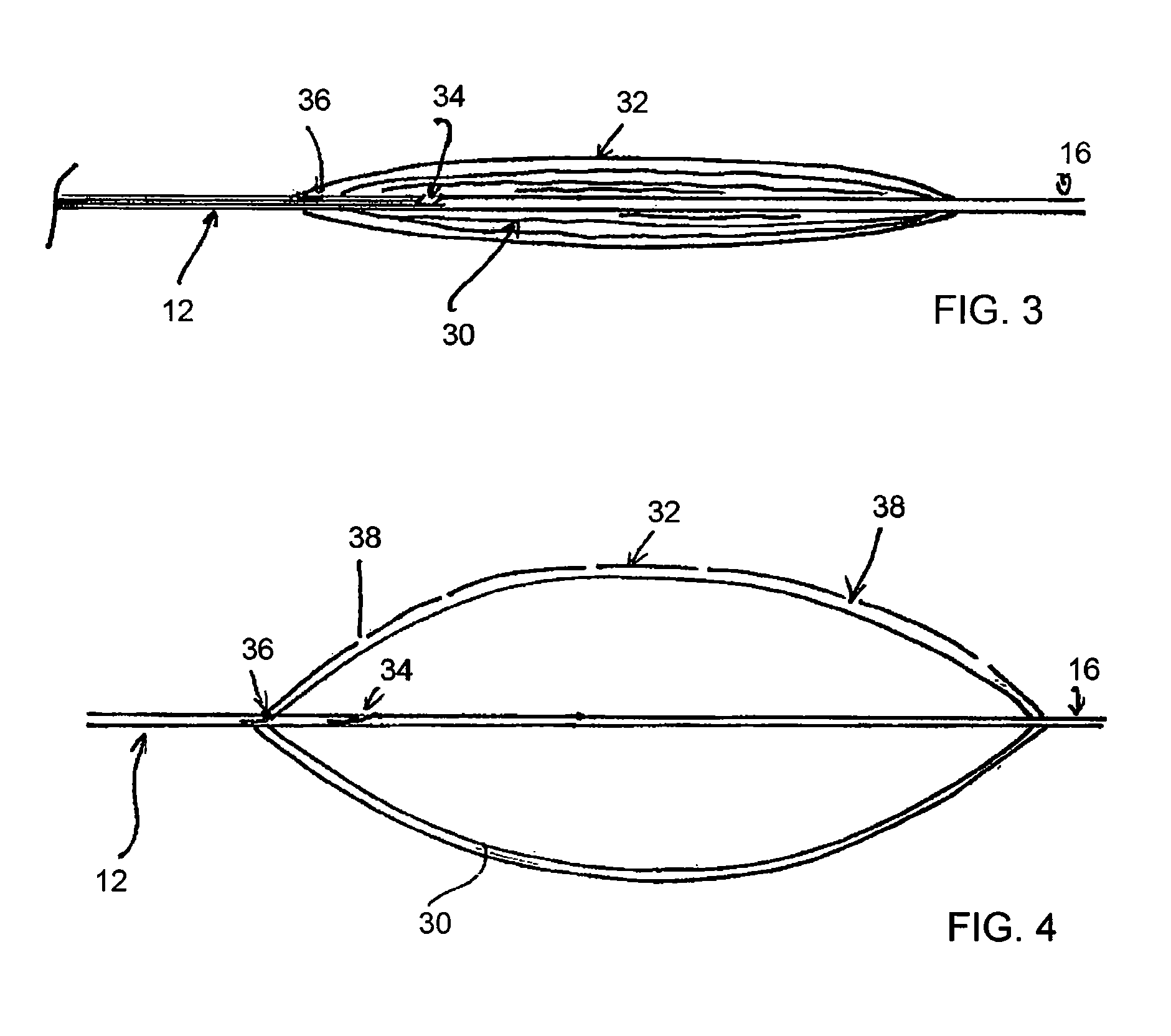Drug Eluting Balloon
a balloon and eluting technology, applied in balloon catheters, dilators, surgery, etc., can solve the problems of blood vessel walls being disturbed or injured, drawbacks during use, and potential trauma or injury to the expanded passage or vessel, so as to reduce the amount of agents, minimize and eliminate edge effects, and limit systemic exposure of patients
- Summary
- Abstract
- Description
- Claims
- Application Information
AI Technical Summary
Benefits of technology
Problems solved by technology
Method used
Image
Examples
Embodiment Construction
[0038]Referring to FIG. 1, there is shown in schematic form an example of balloon catheter assembly 10. The assembly includes an elongate catheter 12 of such a length that the proximal end 14 of the assembly 10 remains outside the patient even when the distal end 16 is at the treatment site within the patient.
[0039]The proximal end 14 is provided with external manipulation elements 18 of a type well known in the art, including one or more handles for use by the surgeon in moving and placing the catheter, connectors for connecting the catheter to a source of medicaments or other fluids, balloon inflation equipment and so on. The proximal end also includes a connector port for the passage of a guide wire therethrough as well as other elements conventionally found in such assemblies.
[0040]At or adjacent the distal end of the assembly 10 there is provided an inflatable balloon assembly 20, described in further detail below. At the tip of the distal end 16, there is advantageously provid...
PUM
 Login to View More
Login to View More Abstract
Description
Claims
Application Information
 Login to View More
Login to View More - R&D
- Intellectual Property
- Life Sciences
- Materials
- Tech Scout
- Unparalleled Data Quality
- Higher Quality Content
- 60% Fewer Hallucinations
Browse by: Latest US Patents, China's latest patents, Technical Efficacy Thesaurus, Application Domain, Technology Topic, Popular Technical Reports.
© 2025 PatSnap. All rights reserved.Legal|Privacy policy|Modern Slavery Act Transparency Statement|Sitemap|About US| Contact US: help@patsnap.com



